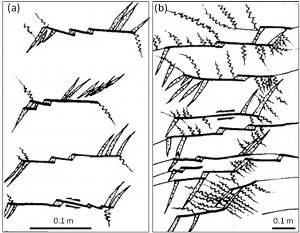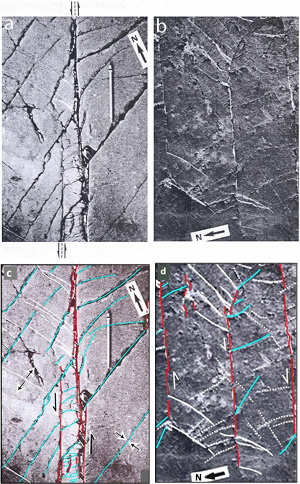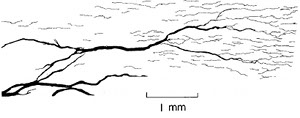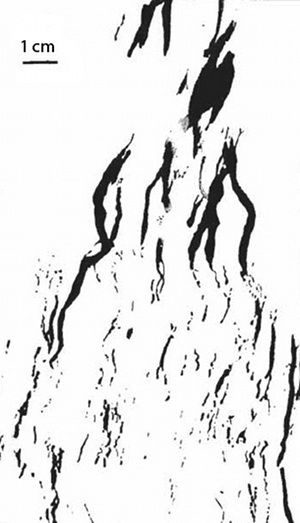| ||||||||||||
|
|
||||||||||||
|
|
||||||||||||
| Splay Pressure Solution Seams | ||||||||||||
|
Shearing of a discontinuity may produce splay pressure solution seams in the compressive quadrants around the end region of the sheared fracture of a fault (Figure 1 and Figure 2), in contrast to splay joints forming in the extensional quadrants (Figure 1). Most aspects of splay pressure solution seams including the angle they make with the sheared discontinuity are conceptually similar to splay joints, so please refer to the sections on Splay Joints for analogy. Splay pressure solution seams commonly occur in materials that have a greater tendency to dissolve under pressure. However, it is quite common that both splay pressure solution seams and splay joints or veins may form around the same sheared discontinuities within the same lithology as shown by Figures 1 and 2.
It is common to observe pressure solution seam geometric patterns which are similar to joint or crack branching geometries. Figure 3 and Figure 4 are two examples for such geometries. We will refer to these cases as apparent pressure solution seam branching because they can also be explained by transverse mergers of the neighboring seams through dissolution of material slabs between the neighboring seams.
| ||||||||||||
| Reference: |
||||||||||||
| Geiser, P.A., Sansone, S., 1981 Ohlmacher, G., Aydin, A., 1995 Petit, J.P., Mattauer, M., 1995 Pollard, D.D., Fletcher, R.C., 2005 Rispoli, R., 1981 Willemse, E.J.M, Peacock, D.C.P., Aydin, A., 1997 |
||||||||||||
|
Readme | About Us | Acknowledgement | How to Cite | Terms of Use | Ⓒ Rock Fracture Knowledgebase |
||||||||||||



